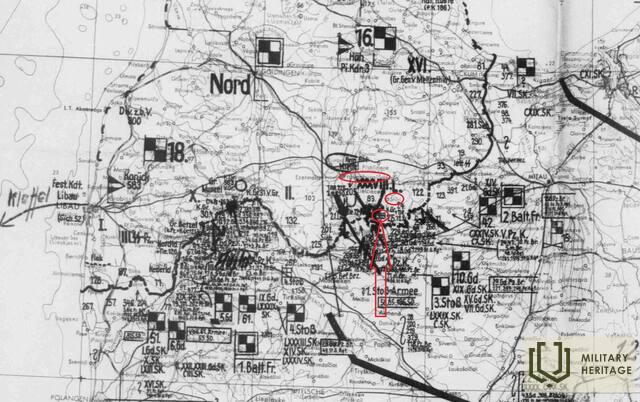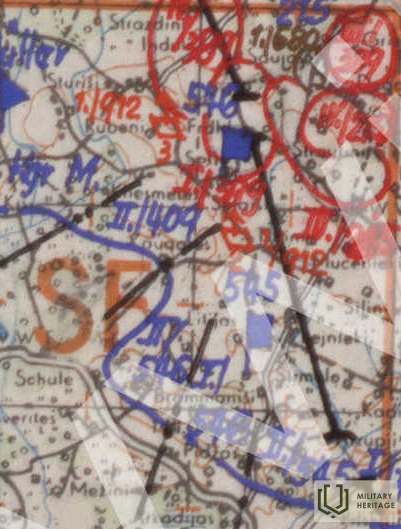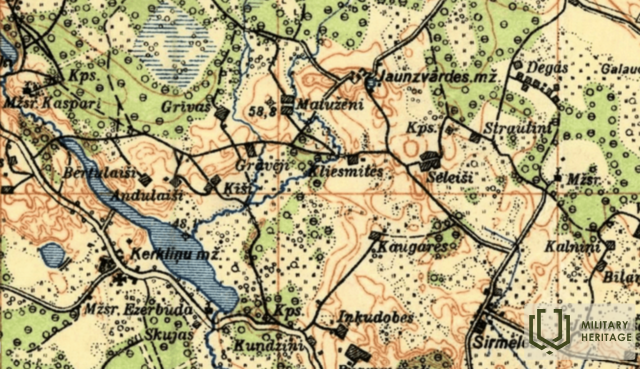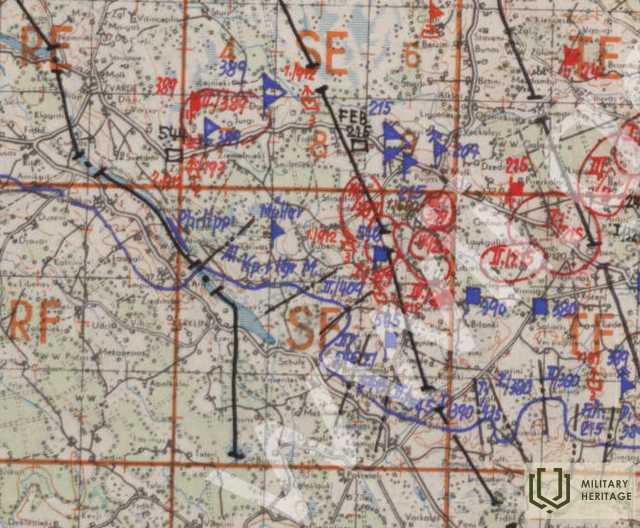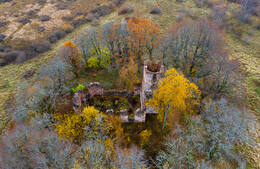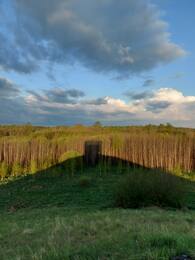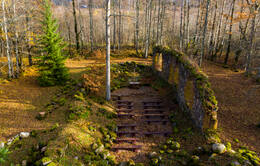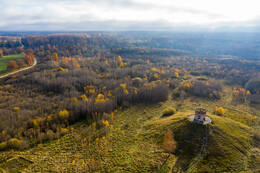Vokiečių armijos kapralo Felkerio pasakojimas apie žvalgybos mūšį 1944 m. lapkričio 8 ir 9 d. Selješų namuose Zvardėje
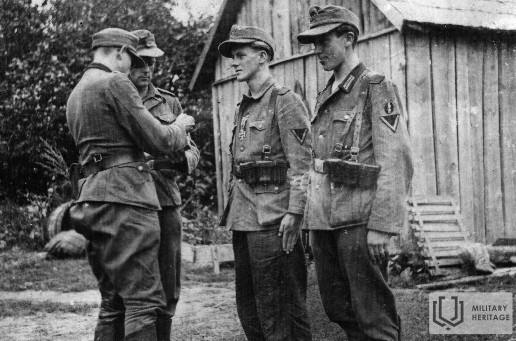
Felkeris (vok. Völcker) buvo 20 metų vaikinas, tarnavęs nacistinės Vokietijos armijos žvalgybos skyriuje, pasakojantis lapkričio 8 ir 9 d. įvykius, kurie ryškiai atspindi fronto įvykius Zvārdėje, kur fronto linija 4 mėnesius judėjo pirmyn ir atgal, taip pat ir Ķērklinių bažnyčios apylinkėse.
1944 m. lapkritį mūsų smarkiai susilpnėjusi divizija buvo reguliariai naudojama kaip savotiška „ugniagesių brigada“. Sukrauti į sunkvežimius, mus veždavo į karščiausias vietas ir dažniausiai turėdavome taisyti fronto linijos pažeidimus, tik tam, kad mus nuvežtų kitur.
Taip jau atsitiko, kad vis dar negaliu pasakyti, kur buvau 1944 m. lapkričio 8 d. popietę. Mūsų pulko žvalgybos dalinys buvo įsikūręs slėptuvėje, kurią vadinome „bulvių rūsiu“. Mano draugas, kareivis Ksedlis, tvirtas 20-ies vyrukas iš Pasau, gulėjo ant žolės už manęs ir kietai miegojo. Ivanas buvo padaręs ilgą pertrauką nuo artilerijos ugnies, ir visi pasinaudojo trumpu poilsiu. Aš sėdėjau ir skaldžiau pagalį, kai vienas rusų sviedinys pataikė į slėnį. Nieko įdomaus, bet supratau, kad mūsų telefono linijos, kurios buvo ten įrengtos, tikriausiai kažką užfiksavo.
Prieš mūsų vadui Dorstui spėjant duoti man atitinkamą įsakymą, aš jau buvau pasiėmęs remonto medžiagas (maskavimo juostą, reples) ir pranešiau Dorstui. Pasakiau jam, kad jam nereikia žadinti eilinio Ksedlo. Šią nedidelę problemą galiu išspręsti pats. Nusileidau į slėnį ir greitai radau pažeistą vietą. Sutvarkiau liniją ir galiausiai pirštais patikrinau, ar teka energija. Norėjau grįžti į mūsų apkasą ir buvau nuėjęs apie 50 metrų šlaitu aukštyn, kai mūsų vadas Dorstas nusileido šlaitu manęs pasitikti. Jis audringai gestikuliavo, šaukė, kad bėgčiau atgal į mišką, rusai veržėsi. Iš „bulvių rūsio“ mano kuopos draugai bėgo šlaitu link manęs, o iš paskos – rusų kareiviai su šūksniais „urrā“ ir intensyvia pėstininkų ugnimi.
Nubėgome į kitą mišką ir ten sutikome kitus, mažesnius dalinius, kurie buvo susirinkę padėti mums sustabdyti invaziją, kuri, laimei, įvyko be tankų paramos. Tai nebuvo didelis puolimas, labiau apšaudymas, bet rusų kareiviai be didesnių problemų užėmė kalną. Tikėtina, kad Rusijos vadovybė, žvalgybos dėka, suprato, kad mūsų ginkluotė sunkiosios ginkluotės požiūriu buvo daugiau nei apgailėtina. Sėdėjome miške ir stebėjome rusų kareivius, kurie toliau plėtė savo pozicijas kalne. Nebuvo jokio būdo juos sustabdyti.
Po dviejų dienų, padedami kapitono Furmano vadovaujamo tankų būrio, galėjome kontratakuoti ir užimti aukštumas su „bulvių rūsiu“. Netrukus prieš vietą, kur prieš dvi dienas buvau užtaisęs liniją, gulėjo mano draugas Ksedlas, mirtinai pašautas į galvą. Mane šiek tiek paguodė tai, kad jis tikriausiai nieko nejautė dėl savo mirties.
Karą išgyveno tik apie 70 mano divizijos kareivių. Vieni, kaip ir aš, patyrė daugiau ar mažiau rimtų sužalojimų, kiti, pavyzdžiui, eilinis Ritweileris, kuris 1944 m. gruodį po kelių valandų apšaudymo neteko sąmonės. Iki šiol mano prisiminimai išblėsę, bet net ir šiandien, sulaukus beveik 80 metų, jie kartais vis dar labai intensyvūs mano sapnuose...
Nuotraukoje (iš kairės į dešinę): leitenantas Ölkeris, seržantas Dorstas, kapralas Völckeris, kareivis Rittweileris.
www.kurland-kessel.de
Susijusi laiko juosta
Susijusios vietos
Ķerklinių bažnyčios griuvėsiai
Kerklinių bažnyčios griuvėsiai yra apie 5 kilometrus į šiaurės vakarus nuo Kokmuižos, netoli Kerklinių ežero. Bažnyčią 1641 m. pastatė Kerklinių dvaro savininkas Heinrichas fon Dönhoffas (Derkartas). Originali medinė bažnyčia buvo pakeista akmeniniu pastatu, po kuriuo buvo įrengti kapai Dönhofų, o vėliau Kleistų šeimų mirusiesiems. Kapai jau buvo sunaikinti per 1905 m. riaušes, tačiau 1949 m. karstai iš kapų buvo perkelti į bažnyčią. Bažnyčia buvo Kuržemės baroko stiliaus pavyzdys – jos drožinius sukūrė Kuldygos ir Liepojos medžio drožėjai. Nors dvaro ir bažnyčios savininkai įvairiais laikais susidūrė su finansinėmis problemomis, per savo gyvavimo laikotarpį bažnyčia buvo kelis kartus rekonstruota. Ji taip pat nukentėjo per Pirmąjį pasaulinį karą, po kurio parapija 1929 m. atstatė mūrą, o 1934 m. pridėjo vargonus. Deja, per Antrąjį pasaulinį karą bažnyčia buvo apgadinta ir didelė jos dalis buvo prarasta, todėl reikia pagirti, kad iki bažnyčios atstatymo 1933 m. daugelis unikalių baroko skulptūrų buvo nufotografuotos, suinventorizuota ir netgi atsidūrė Paminklų valdybos archyve. Įkūrus sąvartyną ir iškeldinus gyventojus, bažnyčia niekada nebuvo restauruota. Šiandien matomos bažnyčios sienos ir bokštas.
Sovietų oro pajėgų taikinių šaudymo vieta Zvarde
Zvārdės poligonas yra Zvārdės savivaldybėje, Saldaus rajone. Tai buvęs SSRS karinės aviacijos poligonas, užimantis daugiau nei 24 000 hektarų.
Buvusio aerodromo teritorijoje yra keletas objektų: Karininkų kurganas, Zvārdės ir Ķērklinių bažnyčių griuvėsiai, Rītelių kapinės, buvusi kariuomenės bazė „Lapsas“ ir kiti. Iki Antrojo pasaulinio karo apžvalgos bokšto vietoje stovėjo „Vairogų“ namas. Statant poligoną, tai, kas liko iš ūkio – sienos, obelyno liekanos ir dalis Veczvārdės dvaro griuvėsių – buvo sukrauta į pylimą, o ant jo pastatytas apžvalgos bokštas. Jis buvo naudojamas kaip apžvalgos aikštelė kariuomenės mokymo manevrams koordinuoti. Ši vieta populiariai vadinama kurganu. Nuo piliakalnio atsiveria vaizdas į buvusį poligoną ir Zvardės gamtos parko bei gamtos rezervato miškingas vietoves. Gera vieta stebėti paukščius. Kurgano apylinkės nėra apželdintos.
Žvėrių bažnyčios griuvėsiai
Zvārdės bažnyčios griuvėsiai yra buvusio Zvardės oro taikinių poligono teritorijoje, netoli vadinamojo „Karininkų kurgano“. Nuvažiavę pusantro kilometro, pravažiuosite T formos sankryžą su netoliese esančiomis Rītelių kapinėmis.
Pirmoji medinė bažnyčia ir klebonija čia buvo pastatytos 1567 m., o mūrinė bažnyčia – 1783 m. vietos valstiečių, Kuržemės didikų ir Kuršo kunigaikščio Petro Byrono lėšomis. Antrojo pasaulinio karo metu kovų metu buvo apgadintas bažnyčios stogas ir bokštas. 1953 m., kai Sovietų Sąjungos gynybos ministerija pareikalavo šioje vietoje įrengti oro taikinių poligoną, Zvārdės bažnyčia, Kerklinių bažnyčia ir Ritelių kapinės buvo įkurdintos oro taikinių poligono centre – šalia dirbtinio aerodromo su privažiavimo keliais ir gynybinėmis pozicijomis, kurį kaip taikinį naudojo sovietų pilotai. Lėktuvai čia skrido iš aerodromų Latvijoje ir kitur Sovietų Sąjungoje. Per mažiau nei 40 metų bažnyčia, kapinės, buvę dvaro rūmai ir dešimtys aplinkinių pastatų virto griuvėsiais.
Sovietų armijos apžvalgos bokštas (Karininkų kurganas)
„Karininkų kurganas“ yra mažiau nei už kilometro nuo Zvārdės bažnyčios griuvėsių. Kurganas sudarytas iš aplinkinių namų ir dvaro rūmų griuvėsių ir liekanų, kurios buvo suverstos buldozeriais. Ant kurgano pastatytas stebėjimo bokštas. Remiantis užrašu, dabartinis bokštas buvo pastatytas 1981 m. Bokštas buvo naudojamas bombų pataikymams registruoti. Mokomosiose bombose buvo sumažintas sprogstamosios medžiagos kiekis, todėl jų pataikymus reikėjo stebėti atidžiau. Nesprogusios bombos buvo nedelsiant neutralizuotos, tačiau ne visas pavyko rasti.
Šiandien čia galima pamatyti bokšto liekanas – plytų sienas. Kadangi užtvanka yra gana aukšta, giedrą dieną Mažeikiuose galima pamatyti net Lietuvos naftos perdirbimo gamyklą.




